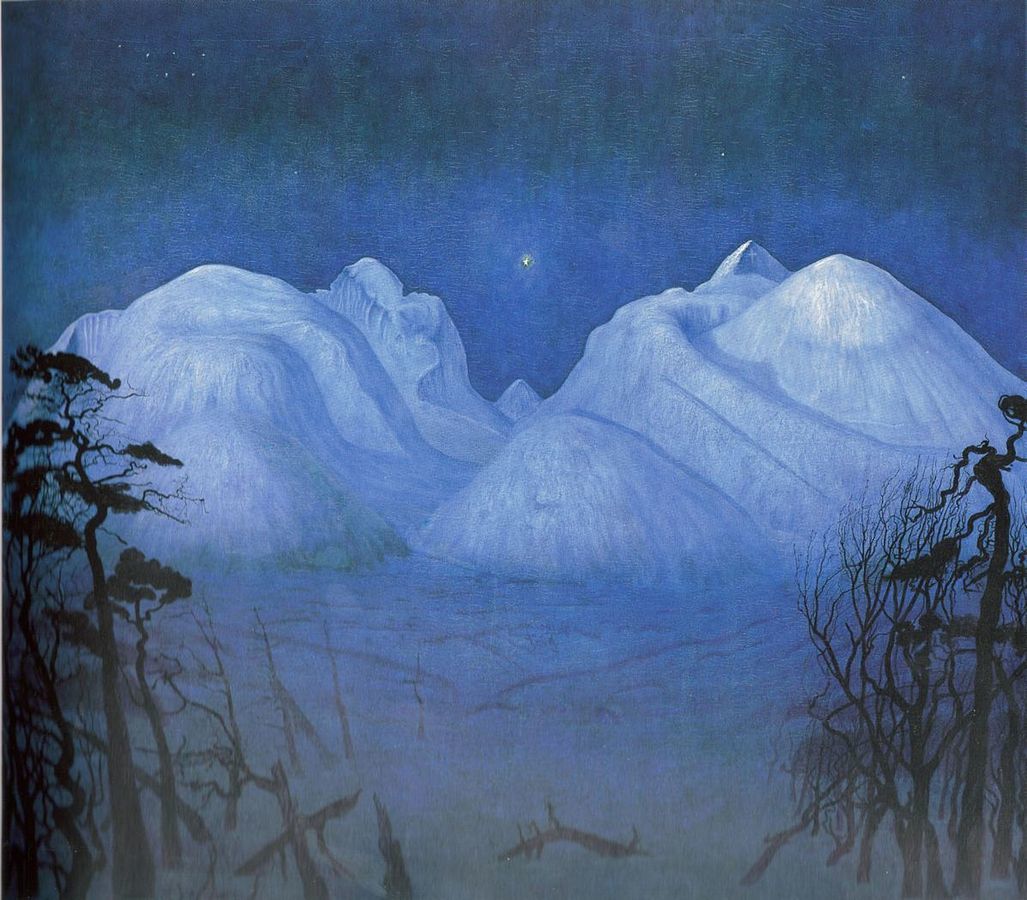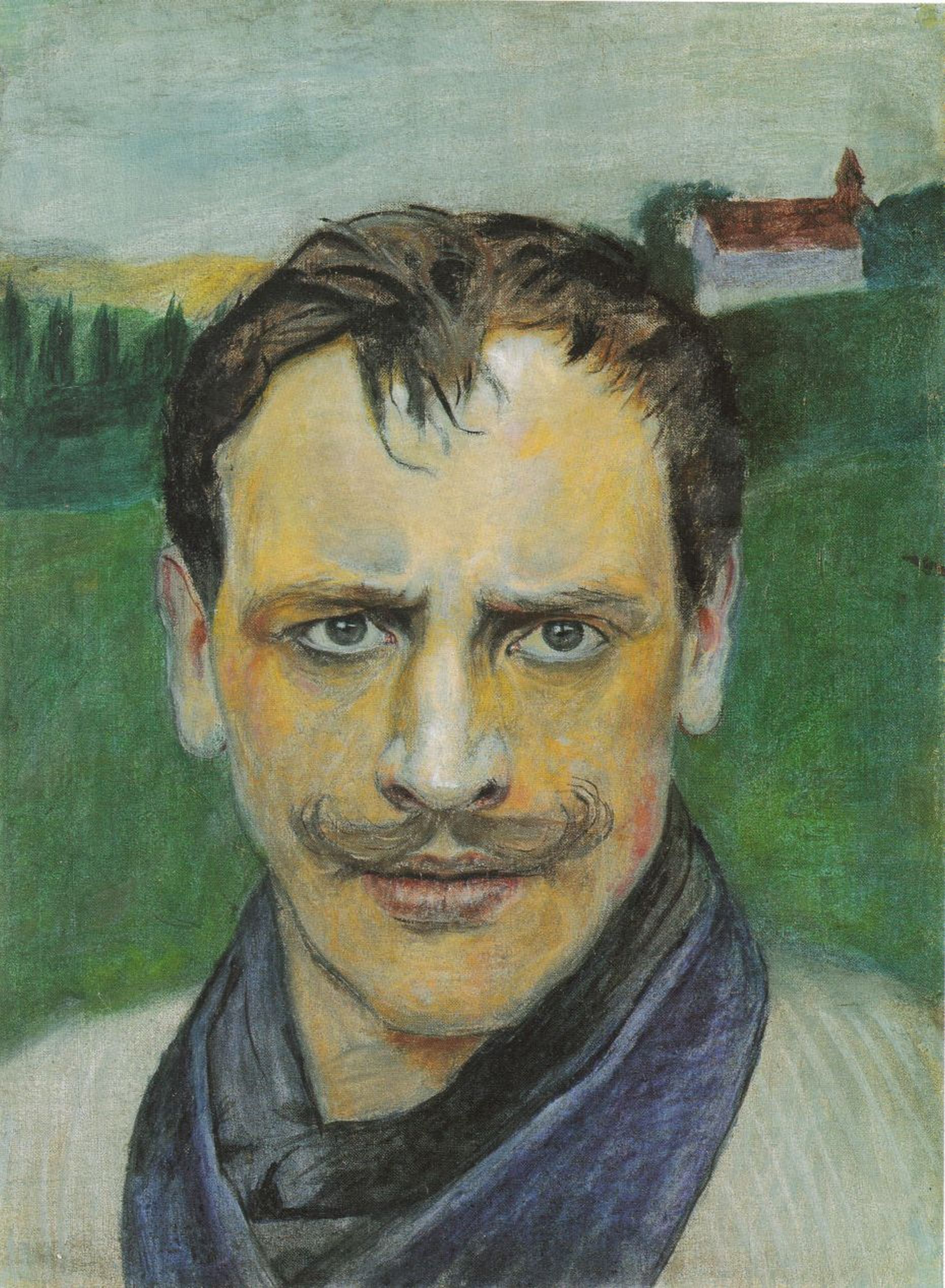In an obituary, someone wrote that as an artist, the Norwegian painter Harald Sohlberg, was alone and forgotten: "A name which was famous in its day." Now that Sohlberg was dead, "the coldness which he helped surround it with, will thaw."
Sohlberg's isolation was partly the tragic result of his wholehearted endorsement of the myth of genius as formulated by Romanticism and adopted by the Symbolists. Like Munch, he was obsessively preoccupied with denying that the influence of other contemporary artists had been important to him. He dissociated himself from the discussion about where he belonged in the history of art, relegating the origins of his artistic awakening outside of art to his own psyche. Sohlberg wrote that his form sprang forth subconsciously from his first awareness of the landscape. The difference in texture of the sky and earth gave him a sense of standing on a heavy and firm planet gazing out into boundless space. He attributed the simple forms and great lines of his pictures to this first awareness of the landscape. The point of departure was the personal experience. Thus, the artist's experience of his subject preceded the picture.
Sohlberg was preoccupied with the concrete local landscape that surrounded him and his emotional reaction to it. Sohlberg attended the Royal School of Art and Design of Christiania. He later trained under the graphic artist and painter Johan Nordhagen. Sohlberg also attended the art school of Kristian Zahrtmann. He is particularly known for his depictions of the mountains of Rondane and the town of Røros. Perhaps his most widely-recognized paintings, in several variations, is Winter's Night in Rondane.
Kordian, thank you for suggesting this artist :)


 Harald Sohlberg
Harald Sohlberg